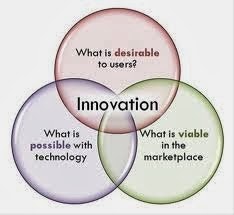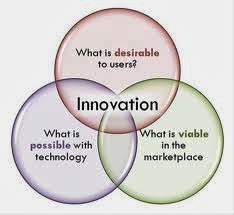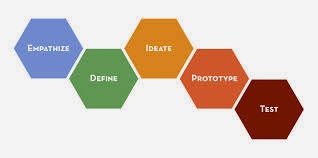What is Design Thinking? Is This Innovation's Panacea?

When I first heard the term 'Design Thinking' it tied my brain into knots. What did it mean? To my mind, 'design' is either a verb or a noun. As a verb, it means either to create or execute an idea, or to conceive a plan. As a noun, a 'design' is the result of such a creation, execution or plan. It can be a drawing, a blueprint, or a work of art. We know what 'design' is. But 'design thinking?' It is thinking about design? Or thinking like a designer?
I then heard that design thinking is taught at Stanford University's d.school, an 'ber cool place you go to instead of B-School for a more multi-disciplinary and creative approach to problem solving. Stanford graduate students from multiple disciplines attend d.School as do executives from across the world, who can attend 'Design Thinking Boot Camp: From Insights to Innovation.'
I had heard that the design thinking approach is tied up with such creative places as Apple, and Nike, and IDEO ' the design firm that put the buzz in the 'design thinking' buzzword. I knew that 'design thinking' is a customer-centered approach that embraces ethnographic observation, iterative prototyping, and the use of multifunctional teams in the process'a trio of my favorite practices. And 'design thinking' is focused on action. But if 'design thinking' is focused on 'doing,' then why don't they call it 'design doing'? 'Thinking' is too cerebral an activity. 'Doing' gets stuff accomplished. Someone needs to create a new term for this. Leaving all that aside '
Defining Design Thinking
Tim Brown, President and CEO of IDEO, which is at the center of the design thinking movement, has given us this definition: 'Design thinking is a human-centered approach to innovation that draws from the designer's toolkit to integrate the needs of people, the possibilities of technology, and the requirements for business success.' Embedded in Brown's definition are the components of People, Technology, and Business. Successful innovation lies at the intersection of these three forces:
Key Elements of Design Thinking
The generally agreed upon model for Design Thinking includes five phases. Note that although the process appears to be linear, it is actually highly iterative.
Empathizing with the user
The model begins with getting out to the users and observing their environments, their behavior, and their needs, that is, 'ethnographic observation.' Rather than begin with a problem statement developed from senior management, for example, you go out and listen to users. You probe beyond typical market research questions and pat answers to uncover insights, emotions, stories, and motivations.
Defining the problem
The next phase in design thinking takes cross-functional and iterative approach to defining the problem to be solved. A cross-functional approach allows varying perspectives, encouraging both creative and analytical approaches. Iterations promote continual connections with users.According to Fast Company, this process involves 'relentless questioning, like that of a small child. Why? Why? Why'? It is through this process that the underlying issues are determined.
Albert Einstein famously said: 'If I had an hour to solve a problem I'd spend 55 minutes thinking about the problem and 5 minutes thinking about solutions.' Care and focus on the problem is an important element of design thinking. Most of the time, people are focusing on the wrong problem.
Ideating
'Ideate' is another one of those words that confound at cocktail parties. Is that like 'brainstorming'? Yes and no. It is about generating as many ideas as possible, as is brainstorming, but it is specifically aimed at generating ideas that address the problem at hand. The focus here is on generating a lot of ideas and embracing the understanding that many will be mistakes.
Prototyping
Prototyping rapidly follows on the heels of ideating. Prototypes are not lengthy exercises in engineering, but rather quick ways to get feedback on whether a proposed solution truly meets the need of the user. In selecting which ideas to prototype, the experts recommend choosing based on potential, not just feasibility. After all, if the prototype does not solve the user's problem, what good is feasibility?
Testing
The team repeatedly brings their prototypes out to users for feedback. Based on feedback, the team will iterate by updating the prototype, going back and ideating, re-framing the problem, or even going back to additional qualitative user research (the 'empathize' phase).
Iterations are Key
As with other customer-centered, rapid prototyping approaches, iteration is a key component of the design thinking approach. Because you are continually focused on getting out and testing prototypes with users, you will get continued feedback that you can use to shape or radically change your ideas.
In this sense, design thinking shares a lot with the Lean Startup methodology and its build-measure-learn feedback loop. Design thinking, however, is more a process about defining the problem to be solved and determining a product direction. The lean startup methodology can be used as follow-on'to pair ethnographic observation, known as 'empathize' in design thinking and 'customer development' in lean startup'with agile product development, where the prototypes increase in fidelity and become products, complete with validated business models.
Is Design Thinking All It's Cracked Up to Be?
It turns out that the label given to 'design thinking' is but one of the concerns people have with this method. Bruce Nussbaum, one of design thinking's biggest initial proponents and frequent Fast Company contributor, wrote this:
For all the gushing success stories that we and others wrote, most were often focused on one small project executed at the periphery of a multinational organization. When we stopped and looked, it seemed like executives had issues rolling out design thinking more widely throughout the firm. And much of this stemmed from the fact that there was no consensus on a definition of design thinking, let alone agreement as to who's responsible for it, who actually executes it or how it might be implemented at scale.
Beyond the definition, however, is the perception. Many people perceive design thinking as part of the 'creative camp' and not the 'business camp.' If 'design' and 'business' are in two separate camps, there is already an organizational culture problem. Nussbaum correctly points out that companies that have achieved success, such as Procter & Gamble and General Electric are those that have shaped the design thinking model to fit their internal cultures.
Another Fast Company contributor, Helen Walters of the Monitor Group's Doblin Innovation consultancy, reminds us in a recent article that 'Design thinking is Not Design.' In this business climate, any process needs to be able to demonstrate understanding of, and sensitivity to, concerns of the c-Suite. 'Fuzziness is not a friend here,' says Walters, and 'designers should do everything they can to demonstrate that they have an understanding of what they're asking, and put in place measurements and metrics that are appropriate and that can show they're not completely out of touch with the business of the business.'
Whether or not design thinking is the panacea everyone has been searching for, few of us would doubt that successful innovations lie at the intersection of People, Technology, and Business.
Make the decision for yourself as to whether design thinking is your cup of tea, and in the spirit of doing and not just thinking, grab a colleague or two and attend Stanford University's Design Thinking Virtual Crash Course.
Would love to hear your thoughts.
Ivy Eisenberg is founder of Our IdeaWorks, an Innovation and Lean Customer Research' consultancy that helps companies connect to customers and other stakeholders to discover business opportunities, accelerate growth, and build and deliver successful products and services. Ivy has more than 25 years of experience in the Front End of Innovation, user interaction design, and software product and project management. She has worked in healthcare, financial services, B2B, consumer goods, and telecommunications sectors. Ivy is also an award-winning humor writer and storyteller, with an MBA in Marketing, Entrepreneurship and Innovation from NYU's Stern School of Business. Contact: ivy@ourideaworks.com.


